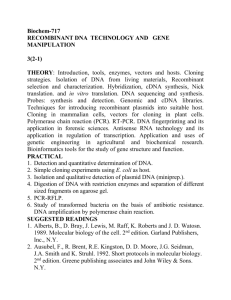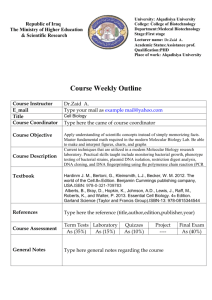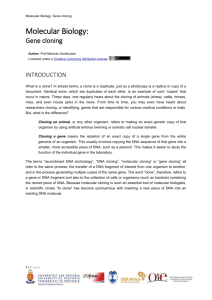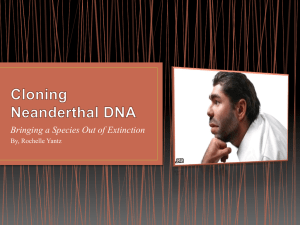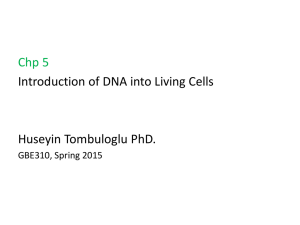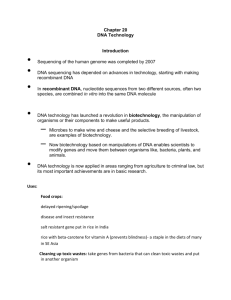Study Questions.
advertisement
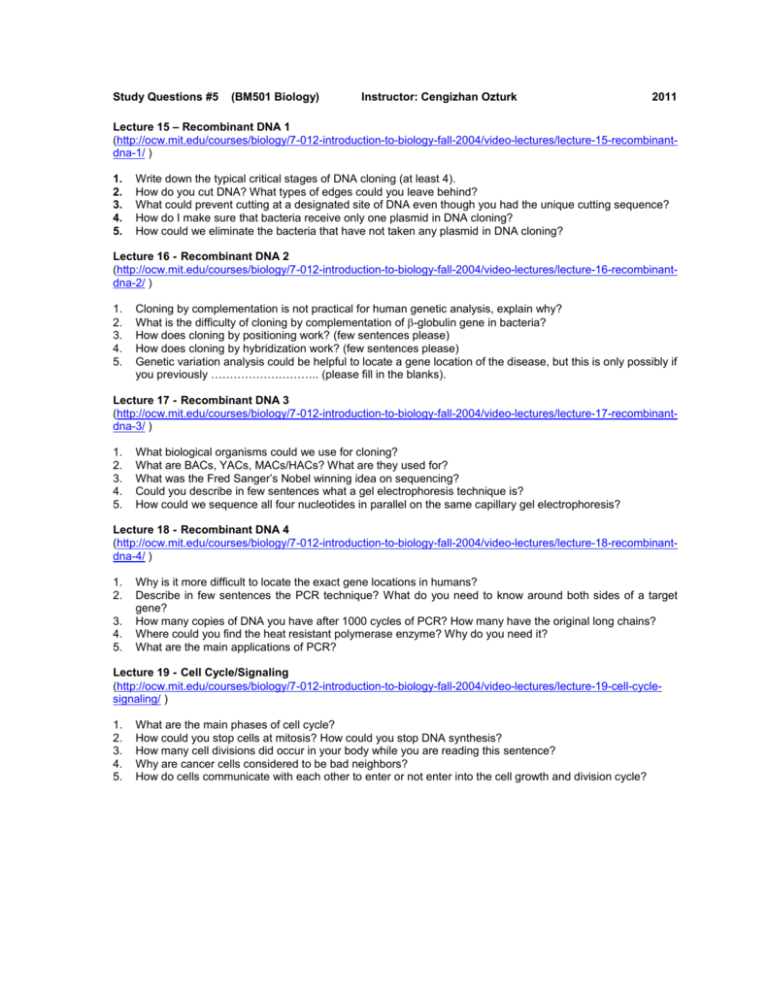
Study Questions #5 (BM501 Biology) Instructor: Cengizhan Ozturk 2011 Lecture 15 – Recombinant DNA 1 (http://ocw.mit.edu/courses/biology/7-012-introduction-to-biology-fall-2004/video-lectures/lecture-15-recombinantdna-1/ ) 1. 2. 3. 4. 5. Write down the typical critical stages of DNA cloning (at least 4). How do you cut DNA? What types of edges could you leave behind? What could prevent cutting at a designated site of DNA even though you had the unique cutting sequence? How do I make sure that bacteria receive only one plasmid in DNA cloning? How could we eliminate the bacteria that have not taken any plasmid in DNA cloning? Lecture 16 - Recombinant DNA 2 (http://ocw.mit.edu/courses/biology/7-012-introduction-to-biology-fall-2004/video-lectures/lecture-16-recombinantdna-2/ ) 1. 2. 3. 4. 5. Cloning by complementation is not practical for human genetic analysis, explain why? What is the difficulty of cloning by complementation of -globulin gene in bacteria? How does cloning by positioning work? (few sentences please) How does cloning by hybridization work? (few sentences please) Genetic variation analysis could be helpful to locate a gene location of the disease, but this is only possibly if you previously ……………………….. (please fill in the blanks). Lecture 17 - Recombinant DNA 3 (http://ocw.mit.edu/courses/biology/7-012-introduction-to-biology-fall-2004/video-lectures/lecture-17-recombinantdna-3/ ) 1. 2. 3. 4. 5. What biological organisms could we use for cloning? What are BACs, YACs, MACs/HACs? What are they used for? What was the Fred Sanger’s Nobel winning idea on sequencing? Could you describe in few sentences what a gel electrophoresis technique is? How could we sequence all four nucleotides in parallel on the same capillary gel electrophoresis? Lecture 18 - Recombinant DNA 4 (http://ocw.mit.edu/courses/biology/7-012-introduction-to-biology-fall-2004/video-lectures/lecture-18-recombinantdna-4/ ) 1. 2. 3. 4. 5. Why is it more difficult to locate the exact gene locations in humans? Describe in few sentences the PCR technique? What do you need to know around both sides of a target gene? How many copies of DNA you have after 1000 cycles of PCR? How many have the original long chains? Where could you find the heat resistant polymerase enzyme? Why do you need it? What are the main applications of PCR? Lecture 19 - Cell Cycle/Signaling (http://ocw.mit.edu/courses/biology/7-012-introduction-to-biology-fall-2004/video-lectures/lecture-19-cell-cyclesignaling/ ) 1. 2. 3. 4. 5. What are the main phases of cell cycle? How could you stop cells at mitosis? How could you stop DNA synthesis? How many cell divisions did occur in your body while you are reading this sentence? Why are cancer cells considered to be bad neighbors? How do cells communicate with each other to enter or not enter into the cell growth and division cycle?
